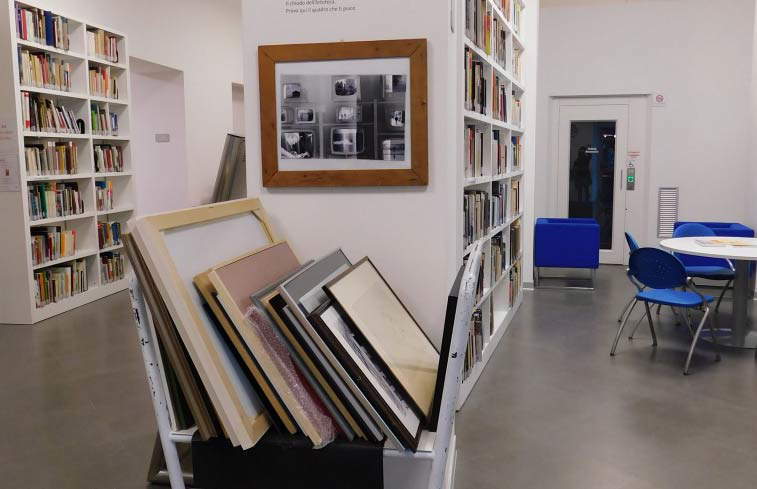Overcoming the pandemic crisis will, in my opinion, have to see a new and intense season of cultural production with public and private support as the protagonist. If it is true that artistic disciplines live through determined selection, this is the time, for a few years, to widen the mesh and encourage a more intense presence of artists’ work in people’s daily lives, because little and good, now especially, is still little. Fostering the work of a larger number of artists also seems useful to research and criticism and would allow renewed selections on an expanded scope of choice. Less subsidies and more opportunities for work.
It seems time, therefore, for a new public commissioning, as widespread as possible, and also for a new private commissioning to bring artists’ work into buildings, offices, places of production and meeting, hospitals and homes. There should also be more support and multiplication of the rare artoteca projects that are really functioning today, perhaps leaning on the library system to lend works to people at home who do not have any due to lack of family tradition or economic possibilities.
Mural works, live performance performances in the squares and courtyards of suburban neighborhoods, publication of books that tell stories of neighborhoods, small town communities or particular neighborhoods, directorial activities, for documentaries and short films and other occupations towards web and social for staff and audiovisual artists should be favored again.
Artists’ work should accompany, as it did in times long past, for example in the Alps , the renovation of public and private properties, with special attention to historic centers and with particular generosity in the suburbs. An opportunity could be provided by the facade bonus or the 110% incentives , in which to include among the eligible expenses works by artists made in the next two years. The experience of encountering the work of artists should no longer appear exceptional, as is often the case now, but daily, especially for childhood, which in Italy should once again grow up having in their living environment, every day, works of art, not only related to the glorious past, but also emerging in these difficult years. The written thought of Alberto Garutti in this regard arises: “In this small room, works from the Museum of Modern and Contemporary Art will be displayed [...] so that the citizens of this neighborhood can see them. This work [...] is dedicated to all those who pass by here, even for a single moment, will look at it.”
 |
| The Artoteca Alto Adige in Bolzano |
Another opportunity for general reflection that the current tragic paralysis of cultural life could foster should refer to improving the organization, governance, of publicly supported cultural institutions. International selections such as those made for the directors of autonomous museums, some other good practices found in the regulations on the reform of museums to make them endowed with “special autonomy” could be re-proposed, in a “national cultural system” perspective, at least by the state, regions and municipalities, to allocate the functions of director and sometimes even those of president of cultural institutions, now entrusted too often with procedures lacking transparency or destined to console unre-elected politicians.
Elsewhere I have written more extensively about the desirability for Italy to arrive, possibly by a general law of Parliament, at a “cultural exception.” This term is used to refer to mechanisms useful for placing curbs on those EU rules originally designed to guarantee business competition and then too often applied to sectors that do not lend themselves to being regulated by mechanisms designed for the market economy. The concept could today be projected onto national rules useful for sparing cultural institutions standardizing bureaucratic strings and exhausting procedures, which when applied on the cultural sector, almost always make impossible the speed of decision-making necessary for real promotion of creativity, cultural development of citizens and efficient management of many of the institutions deputed to that end.
In the current scenario that suggests fears of a stunted return of cultural participation to pre-covid levels and a pause in international mass tourism (the main source of power for museum coffers), it seems necessary to have ready the planning of an alternative emergency financing system, a Plan B that provides support measures for cultural institutions not only referring to the parameter of the restitution of lost revenues. Especially for major cultural entities that are considered vital to national or local identity, it seems clear that the public hand will have to guarantee even in emergencies the resources for essential operating expenses and must as of now figure out how to do so.
The point of the Mibact and the culture departments lies in the need to provide cultural workers with the excellent qualification of officials, management and staff in strategic functions. Instead, qualification is lost through staff shortages and too many interims and disproportionate workloads. Careful selection and constant training are therefore to be increased, workloads are to be surveyed from scratch, as the ways of doing culture have rapidly and substantially changed. In general, because of the social and economic reflection of the sector, because of the preparedness of much of the younger generation of tenured or precarious workers, and because of the laudable efforts so far put in place by various recent reforms, a law should achieve the result that workers in the cultural sector can be better paid.
An organic law, I repeat myself, encompassing every sector of national cultural policy is desirable, aware of how utterly essential it is for the health of citizens and for the social and economic restart of the country.
Amplius in:
Warning: the translation into English of the original Italian article was created using automatic tools. We undertake to review all articles, but we do not guarantee the total absence of inaccuracies in the translation due to the program. You can find the original by clicking on the ITA button. If you find any mistake,please contact us.